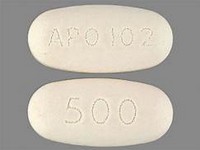Etodolac
CLINICAL USE
NSAID and analgesic
DOSE IN NORMAL RENAL FUNCTION
600 mg daily in 1–2 divided doses
PHARMACOKINETICS
DOSE IN RENAL IMPAIRMENT
GFR (mL/MIN)
DOSE IN PATIENTS UNDERGOING RENAL REPLACEMENT THERAPIES
IMPORTANT DRUG INTERACTIONS
Potentially hazardous interactions with other drugsACE inhibitors and angiotensin-II antagonists: antagonism of hypotensive effect, increased risk of nephrotoxicity and hyperkalaemia
ADMINISTRATION
Reconstition
–
Route
Oral
Rate of Administration
–
Comments
Take with or after food .ETodoLAC 287
OTHER INFORMATION
Inhibition of renal prostaglandin synthesis by NSAIDs may interfere with renal function, especially in the presence of existing renal disease – avoid if possible; if not, check serum creatinine 48–72 hours after starting NSAID – if increased, discontinue therapyIn patients with renal, cardiac or hepatic impairment, especially those taking diuretics, caution is required since the use of NSAIDs may result in deterioration of renal function. The dose should be kept as low as possible and renal function should be monitoredUse normal doses in patients with ERF on dialysis if they do not pass any urineUse with caution in renal transplant recipients – can reduce intrarenal autocoid synthesisAccumulation of etodolac is unlikely in ARF, CKD or dialysis patients as it is metabolised in the liver.
